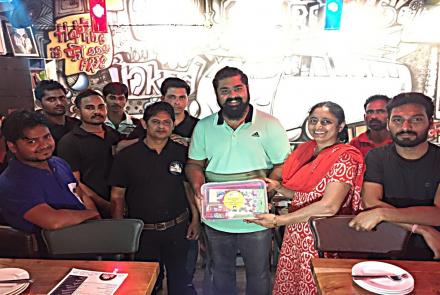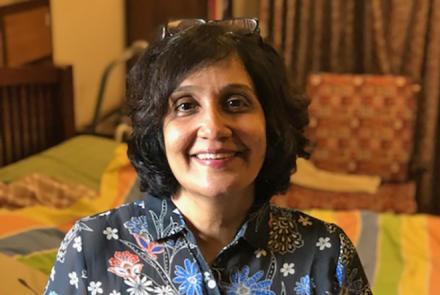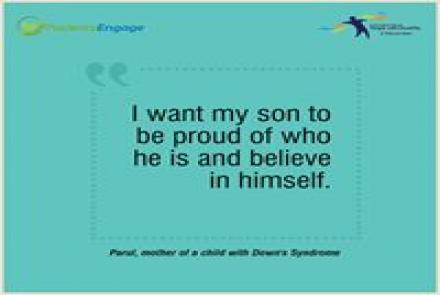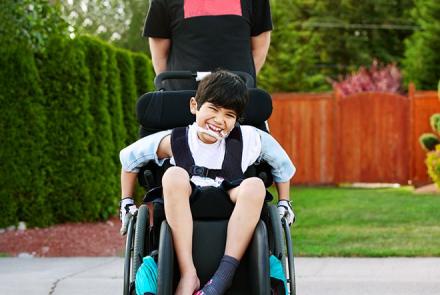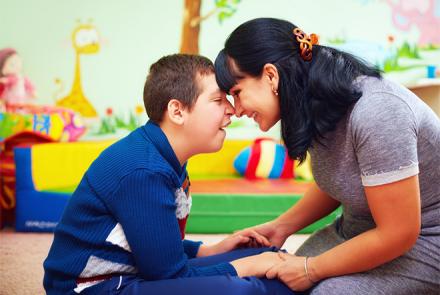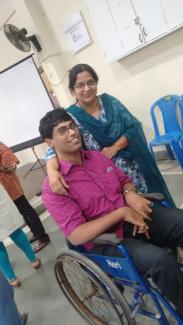
As we wait for Kalki Koechlin’s portrayal of a gutsy girl with Cerebral Palsy in the award-winning film Margarita with a Straw, we find out more about the condition from rehabilitation specialist Lakshmi Gopalakrishnan. The film releases on 17th April 2015.
Cerebral Palsy is a birth-related disorder that affects the brain and nervous system. The nerve damage causes difficulties in the child’s movement, coordination, posture and ability to walk. It can also affect speech, cognitive ability, vision, and cause epilepsy.
What causes Cerebral Palsy (CP)?
Cerebral palsy results from damage to certain parts of the developing brain. This damage can occur early in pregnancy when the brain is just starting to form/ during the birth process as the child passes through the birth canal / after birth in the first few years of life.
In many cases, the exact cause of the brain damage is never known.
Prenatal (before birth): At least 70-80% of cases of cerebral palsy begin before birth.
It can be caused by:
• Infections in the mother -German measles, other infections
• Accident /trauma
• Smoking, alchohol, drugs
• Amniotic fluid disorders (less than 300 ml or more than 2 litres of amniotic fluid are known to cause disorders)
• Umbilical cord around neck
• Insufficient placenta
• Multiple pregnancy
Perinatal (during birth)
• Premature birth
• Prolonged labour
• Forceps delivery
• Lack of oxygen
Post natal (after birth)
• Severe jaundice
• Seizures
• Meningitis/Encephalitis
• Low sugar
• Head injury
Cerebral Palsy is NOT
• Contagious
• Progressive
• Usually hereditary
• Primary cause of death
Types of CP
Muscle tone is the amount of tension or resistance-to-movement in a muscle. Muscle tone is what helps us to keep our bodies in a certain position or posture. Changes in muscle tone are what enable us to move. The brain damage in CP directly affects the muscle tone.
According to the effect on the child’s muscle tone, CP can be classified as follows:
Spastic-Tense, tight muscles (most common type of C.P). High muscle tone.
Hypotonic-Floppy; low muscle tone.
Athetoid - Constant, uncontrolled (involuntary) motion of limbs, head, eyes. Muscle tone fluctuates from high to low.
Ataxia - Poor balance, often causing falls and stumbles. Walks with wide based gait. (Low muscle tone)
Mixed – Spastic-athetoid.
What is the treatment for children with CP? Can CP be cured?
Drugs and surgery cannot cure this condition. A child with CP will become an adult with CP.
Early detection and training is vital. Early intervention of a child with cerebral palsy focuses on speech, movement and education. This is carried out by Physiotherapists, Occupational and Speech Therapists and Special Educators.
Medication is used sometimes to treat very spastic muscles (anti-spastic drugs) and to treat seizures (anti-epileptic drugs).
If the muscles get contracted (fixed in a position), surgery is performed to release the muscle, followed by physiotherapy.
Walking aids, mobility aids and orthoses are often used. Ex: Wheel chairs, walkers, sticks, knee and arm braces, special shoes, special furniture etc.
Life with CP
With the right kind of support from family, professionals and the community, a person with CP can lead a fulfilling life; he can attend a mainstream school, college and take a suitable job in an office/pursue a profession; he can learn a skill and use it professionally; he can have as many choices as any other person without Cerebral Palsy.
The Rights of Persons with Cerebral Palsy are the same as that of any other person.
For example Right to Life with Dignity, Right to Information & Communication, Right to recreation, Right to Education, Right to Mobility, Right to Health, Right to Family Life and so on.
For stories of young people with CP, who attended Vidya Sagar, an NGO in Chennai working with people with neurological impairments, visit http://www.vidyasagar.co.in/alumni/#/Profile
Pic of Lakshmi with Abhishek who now works for an NGO raising funds for people with communicable diseases
Lakshmi Gopalakrishnan is a Special Educator and Rehabilitation specialist with 17 years of experience in the field of disability. She worked at Vidya Sagar, an NGO that provides services for people with neurological impairments, Public Health Centre and Children's Hospital, Chennai. She lectures on disability and psychology.

